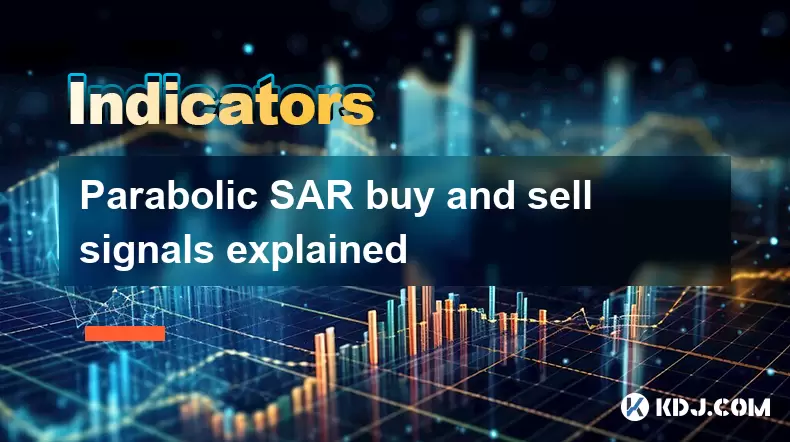-
 Bitcoin
Bitcoin $118,698.3676
0.16% -
 Ethereum
Ethereum $3,428.4877
5.97% -
 XRP
XRP $3.2496
9.52% -
 Tether USDt
Tether USDt $1.0002
0.00% -
 BNB
BNB $725.6930
4.36% -
 Solana
Solana $174.8923
4.52% -
 USDC
USDC $0.9997
-0.02% -
 Dogecoin
Dogecoin $0.2139
6.02% -
 TRON
TRON $0.3155
4.62% -
 Cardano
Cardano $0.8045
7.12% -
 Hyperliquid
Hyperliquid $46.6582
-1.72% -
 Stellar
Stellar $0.4676
0.80% -
 Sui
Sui $4.0143
0.38% -
 Chainlink
Chainlink $17.1546
2.97% -
 Hedera
Hedera $0.2458
3.27% -
 Bitcoin Cash
Bitcoin Cash $496.5967
-0.06% -
 Avalanche
Avalanche $22.8813
3.13% -
 Shiba Inu
Shiba Inu $0.0...01439
3.42% -
 UNUS SED LEO
UNUS SED LEO $8.8389
0.42% -
 Toncoin
Toncoin $3.2113
2.82% -
 Litecoin
Litecoin $101.2646
4.24% -
 Polkadot
Polkadot $4.2262
2.32% -
 Monero
Monero $340.4295
2.92% -
 Pepe
Pepe $0.0...01365
2.92% -
 Uniswap
Uniswap $8.9702
-2.78% -
 Bitget Token
Bitget Token $4.7675
2.00% -
 Dai
Dai $0.9998
-0.02% -
 Ethena USDe
Ethena USDe $1.0003
-0.04% -
 Aave
Aave $324.6394
-2.11% -
 Bittensor
Bittensor $433.6051
-0.88%
Parabolic SAR buy and sell signals explained
The Parabolic SAR helps crypto traders spot trend reversals and potential buy/sell signals by flipping dots above or below price charts, especially useful in volatile markets like Bitcoin or Ethereum.
Jul 16, 2025 at 11:49 am

Understanding the Basics of Parabolic SAR
The Parabolic SAR (Stop and Reverse) is a technical indicator widely used in cryptocurrency trading to identify potential trend reversals. It was developed by J. Welles Wilder and is commonly applied across various financial markets, including crypto. The indicator appears as a series of dots placed either above or below the price chart. When these dots shift from one side of the price to the other, it signals a potential reversal in the trend.
In the context of cryptocurrencies like Bitcoin or Ethereum, where volatility is high, the Parabolic SAR helps traders spot entry and exit points more effectively. However, it's important to understand that this tool works best in trending markets and may produce misleading signals during sideways or choppy price action.
How Parabolic SAR Generates Buy Signals
A buy signal is generated when the Parabolic SAR dots move from above the price to below it, indicating a shift from a downtrend to an uptrend. This transition suggests that bullish momentum is taking over, and traders might consider entering long positions.
- When the price starts rising and the SAR dots flip underneath the candles, it confirms a change in direction.
- Traders often wait for a few candlesticks to close above the SAR line before acting, ensuring the signal isn't a false one.
- In fast-moving crypto markets, it's crucial to combine this with volume indicators or moving averages to filter out noise.
For example, if you're observing the BTC/USDT pair on a 4-hour chart and notice the SAR dots switching from above to below during a breakout, this could be a valid buy opportunity.
Recognizing Sell Signals with Parabolic SAR
Conversely, a sell signal occurs when the SAR dots move from below the price to above it, signaling a possible bearish reversal. This typically happens after an uptrend has exhausted its momentum.
- As the price begins to stall or decline, the SAR dots appear above the price bars, suggesting that sellers are gaining control.
- A prudent trader will look for confirmation through additional tools such as RSI or MACD to avoid premature exits.
- In highly volatile assets like altcoins, it's common to see multiple SAR flips within short timeframes, which can lead to whipsaws.
For instance, during a sharp rally in ETH/USDT followed by a sudden drop, the SAR dots appearing above the candles may warn of a trend reversal, prompting traders to close long positions or initiate shorts.
Customizing Parabolic SAR Settings for Crypto Markets
While the default settings of the Parabolic SAR (acceleration factor starting at 0.02 and increasing by 0.02 up to a maximum of 0.2) work well in traditional markets, they may need adjustment in the crypto space due to higher volatility.
- Increasing the acceleration factor makes the indicator more sensitive to price changes, leading to frequent but potentially unreliable signals.
- Lowering the acceleration factor reduces sensitivity, which may help in filtering out minor fluctuations but could result in delayed entries.
- Some traders modify the step and maximum values based on their trading style—day traders prefer faster settings, while swing traders opt for slower ones.
It's essential to backtest any modified configuration using historical data before applying it in live trading scenarios involving digital assets like SOL or ADA.
Combining Parabolic SAR with Other Indicators
Relying solely on the Parabolic SAR in cryptocurrency trading can be risky due to frequent false signals caused by market noise and manipulation. Therefore, combining it with complementary tools enhances accuracy.
- Using moving averages like the 50 EMA or 200 EMA alongside SAR can confirm the direction of the trend.
- The Relative Strength Index (RSI) helps determine overbought or oversold conditions, offering insight into whether a SAR signal is likely to hold.
- Volume analysis using OBV (On-Balance Volume) or standard volume bars adds another layer of validation to SAR-based decisions.
For example, if the SAR indicates a sell signal and the RSI is above 70, it reinforces the likelihood of a bearish move, especially in assets like DOGE or SHIB that are prone to pump-and-dump cycles.
Frequently Asked Questions
Q: Can Parabolic SAR be used for scalping in crypto markets?
Yes, but caution is advised. Since scalping involves quick entries and exits, the SAR may generate too many signals, leading to confusion and losses if not filtered properly. Combining it with tight stop-loss levels and volume spikes can improve results.
Q: Why does Parabolic SAR fail during consolidation phases in crypto?
During sideways movement or consolidation, the SAR keeps flipping sides frequently, creating false signals. This behavior stems from its design—it's meant for trending environments, not ranging ones. Traders should pause SAR-based strategies during such periods.
Q: Is there a way to automate Parabolic SAR trading in crypto?
Absolutely. Many trading platforms and bots allow integration of the SAR indicator into automated strategies, especially when paired with other filters. However, thorough testing on demo accounts is necessary before deploying real funds.
Q: How reliable is Parabolic SAR compared to MACD in crypto trading?
Both have strengths. While MACD focuses on momentum and crossovers, SAR emphasizes trend reversals. They complement each other well—using them together can provide clearer signals than relying on either alone.
Disclaimer:info@kdj.com
The information provided is not trading advice. kdj.com does not assume any responsibility for any investments made based on the information provided in this article. Cryptocurrencies are highly volatile and it is highly recommended that you invest with caution after thorough research!
If you believe that the content used on this website infringes your copyright, please contact us immediately (info@kdj.com) and we will delete it promptly.
- XRP's Wild Ride: Chasing ATHs and Cloud Mining Dreams in the Crypto Jungle
- 2025-07-18 02:30:13
- MoonBull, Crypto Gains, and MEW Volume: What's Buzzing in the Meme Coin World?
- 2025-07-18 02:35:12
- Crypto Market, Bull Market, and Policy: Navigating Trump's 'Crypto Week' Rollercoaster
- 2025-07-18 01:50:12
- Winning Design: Nine-Year-Old's Art Becomes a Chocolate Coin!
- 2025-07-18 01:10:12
- Penguin Power, BlockDAG Boldness, and Uniswap's Upswing: Decoding Crypto's Latest Moves
- 2025-07-18 01:50:12
- Bitcoin, Market Cap & Strategy: Decoding the Crypto Game in 2025
- 2025-07-18 01:10:12
Related knowledge

Advanced RSI strategies for crypto
Jul 13,2025 at 11:01am
Understanding the Basics of RSI in Cryptocurrency TradingThe Relative Strength Index (RSI) is a momentum oscillator used to measure the speed and chan...

Crypto RSI for day trading
Jul 12,2025 at 11:14am
Understanding RSI in the Context of Cryptocurrency TradingThe Relative Strength Index (RSI) is a momentum oscillator used to measure the speed and cha...

Crypto RSI for scalping
Jul 12,2025 at 11:00pm
Understanding RSI in the Context of Crypto TradingThe Relative Strength Index (RSI) is a momentum oscillator widely used by traders to measure the spe...

What does an RSI of 30 mean in crypto
Jul 15,2025 at 07:07pm
Understanding RSI in Cryptocurrency TradingRelative Strength Index (RSI) is a momentum oscillator widely used in cryptocurrency trading to measure the...

What does an RSI of 70 mean in crypto
Jul 13,2025 at 06:07pm
Understanding the RSI Indicator in Cryptocurrency TradingThe Relative Strength Index (RSI) is a widely used technical analysis tool that helps traders...

Does RSI work in a bear market for crypto
Jul 16,2025 at 01:36pm
Understanding RSI in Cryptocurrency TradingThe Relative Strength Index (RSI) is a momentum oscillator used by traders to measure the speed and change ...

Advanced RSI strategies for crypto
Jul 13,2025 at 11:01am
Understanding the Basics of RSI in Cryptocurrency TradingThe Relative Strength Index (RSI) is a momentum oscillator used to measure the speed and chan...

Crypto RSI for day trading
Jul 12,2025 at 11:14am
Understanding RSI in the Context of Cryptocurrency TradingThe Relative Strength Index (RSI) is a momentum oscillator used to measure the speed and cha...

Crypto RSI for scalping
Jul 12,2025 at 11:00pm
Understanding RSI in the Context of Crypto TradingThe Relative Strength Index (RSI) is a momentum oscillator widely used by traders to measure the spe...

What does an RSI of 30 mean in crypto
Jul 15,2025 at 07:07pm
Understanding RSI in Cryptocurrency TradingRelative Strength Index (RSI) is a momentum oscillator widely used in cryptocurrency trading to measure the...

What does an RSI of 70 mean in crypto
Jul 13,2025 at 06:07pm
Understanding the RSI Indicator in Cryptocurrency TradingThe Relative Strength Index (RSI) is a widely used technical analysis tool that helps traders...

Does RSI work in a bear market for crypto
Jul 16,2025 at 01:36pm
Understanding RSI in Cryptocurrency TradingThe Relative Strength Index (RSI) is a momentum oscillator used by traders to measure the speed and change ...
See all articles

























































































